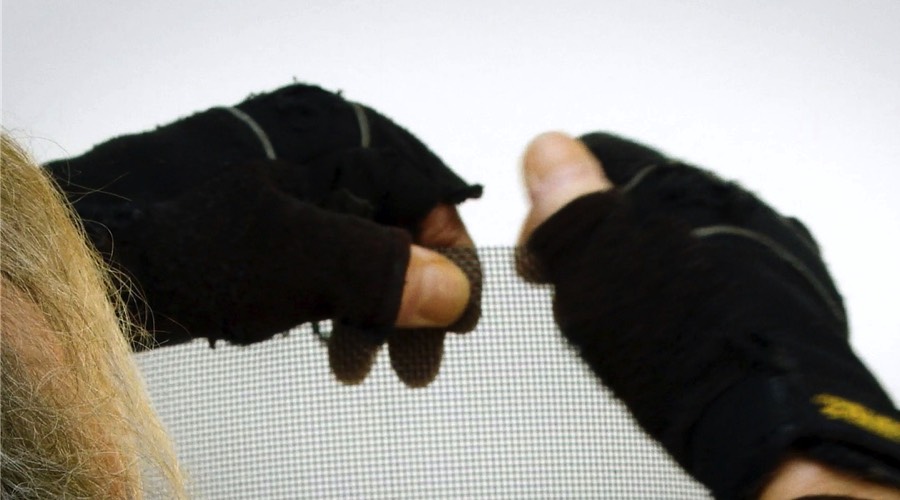See further interview videos on page VIDEOS
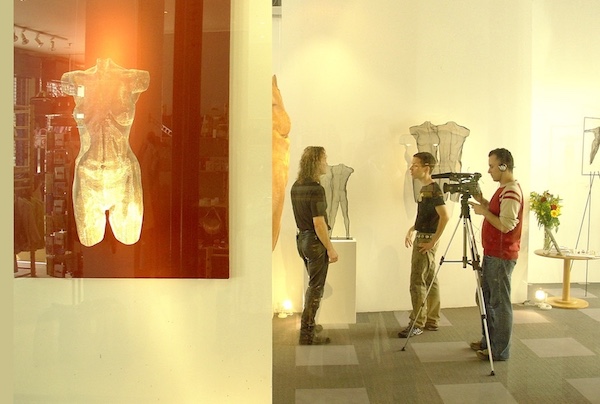
Have you always had a preoccupation with the human form? Since when?
Yes, despite the trends during my art school years for non-figurative, abstract, minimal and multi-media activities. There are two main reasons for this preoccupation:
1 Because I can only work on things and subjects which I have a feeling and passion for.
2 I like to be involved in what interests me, not necessarily what is fashionable and popular - therefore my commitment as such enables me to explore the possibilities extensively.
Would you say you are not interested in current trends?
I take notice. It is possible that my art influences trends in some respects - this should be true of any contemporary activity which integrates into the culture. Trends are often inventions based on a desire for society to categorise - or in some cases a way of justifying plagiarism. In general Artists work with a very individual approach.
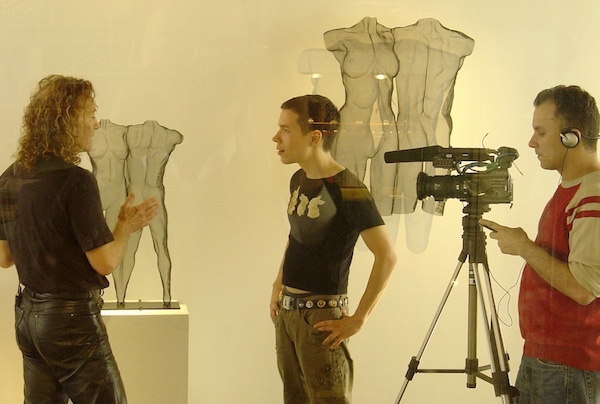
When did you first start working in wire-mesh, what year?
I discovered the particular properties of wire-mesh in 1977 at art school, at that time, I was working with more conventional solid materials - such as plaster, wood, bronze, stone and fibreglass casting.
One of the reasons for steelmesh in art schools is because it is a traditional material for armature (the structure used for plaster sculpture where chicken-wire composes the basic skeletal form).
I thought these unsophisticated armatures were completely unappreciated as a potential art form and decided to reinterpret the guts of the sculpture, as I saw it - a strong and important statement in it’s own right. At the time, I had no idea that this observation would eventually be the basic ‘armature’ of my future work and career.
In my own work I was composing figurative sculptures in space frame structures (still present today), and unlike conventional compositions, I was screening off the object with semi-opaque materials such as: frosted glass and plastics, cloth and fabrics and, of course, steel-mesh. It was during this period I discovered that steelmesh could be modelled to a degree of sophistication - you can imagine the excitement, when I merged the object with it’s diaphanous screen so that they became one statement.
This was important for it’s sheer sculptural economy and stunning visual succinctness and has continued to be an inspiration for me since. The idea I was working with, and continue to work with today, sprang from the initial discoveries about the material at that time.
All visual media is about the transformation of an ordinary material (industrial, domestic or otherwise) into a language expressing and communicating in a way that no other medium can.
What are the unique/special properties of the wire mesh?
Firstly, the mesh is manufactured flat off the roll and is a uniform grid structure machined with a relentless integrity. When the mesh with all it’s lines stretch into three dimensions, it has the psychological effect of creating a completely new type of space - that is space it newly occupies when stretched.
Secondly, it is transparent - 90% thin air, yet it has as much, and possibly more, presence than a conventional solid form.
Because of this, I have been able to introduce the use of lighting as an integral part of a particular composition, combining two and three dimensions by using shadows - an optical fusion of image and object.
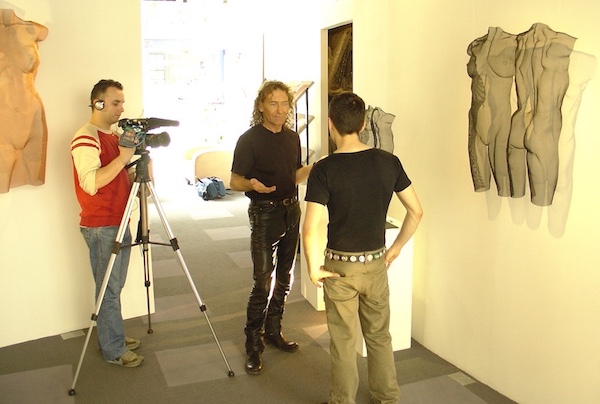
Do you sculpt a series of bodies or are they one off creations?
I often work on more than one at a time - that is variations of the same idea. Working with more than one sculpture enables me to achieve subtleties in each individual version which would otherwise be lost if each facet was contained in one piece.
Basically, it stops me from overworking one piece, so that I can bring out particular characteristics separately over several subjects. Therefore, each sculpture is obviously unique.
How do you respond to a specific commission - do you find a brief challenging or limiting?
Mostly commissions are a challenge - it’s often more difficult - but it does mean that my activities are more expansive. Commissions require me to stretch my vocabulary and invent new designs or solutions. Every single situation is different leading me to discover new forms and ways of working the material. Even though I have an extensive vocabulary from the work I have done, I am always looking for new directions.
For example, with the Natural History Museum, my commission was to deal with the human element for the Primates Gallery. In addition to my work being an actual primate activity of today, the involvement led me to think and rethink my own condition, as well as the technical and aesthetic challenge of installing a three part scenario mounted on glass. Here,the emphasis was on the transparency of my work in relation to the Pawson Williams overall concept of reclaiming the original character of the space, ie. the architecture of Waterhouse. Often commissions are site-specific, with these spatial constraints I am further challenged.
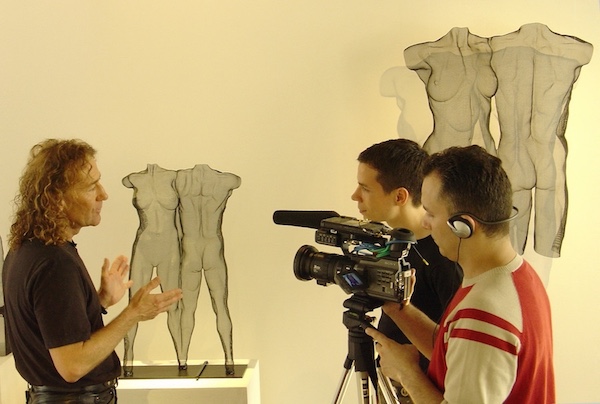
Do you look at the work of other artists much?
Of course, but not just other artists, I look at all visual and other media - Television, advertising, video, music, film, theatre, dance and so on.
Where do you study human form? Do you use life models?
I use a variety of ways to record and study the forms. Mainly photography and video, whilst also using direct drawing in charcoal and inks to capture different aspects, stances and movement. The model sessions are often very kinetic in order to gather an impression of the liveness of the flesh, whilst combining with his vast knowledge of anatomical detail accumulated throughout.
Sometimes I use models. I am generally very aware of people - body movements and expression. Artists develop a way of seeing for their own purposes. Good sources of day to day study are: social contact, working out in the Gym, the use of photos, TV and video, plus an unknown degree of subliminal intake. I am also inspired by the work of Artists such as: Rodin, Michelangelo, Medardo Rosso, Egon Schiele many other painters and obviously my contemporaries. My sources perpetually evolve along with my experiences.
Would you say you have a preoccupation with health and fitness?
Yes, well not a preoccupation, I am very interested in anatomy and it is a way of learning how my own body works - not just functionally, but also how we express ourselves on every level through body language.We confront the world with our bodies on many levels, what we individually look and feel like, and how we see each other, is astonishingly important.
I am interested in how partial figures/fragments can become powerful forms of expression. I often deal with heads, torsos, hands and feet separately, because they can say very different and surprising things; particularly if you understand that a torso has its individual character and ‘personality’.
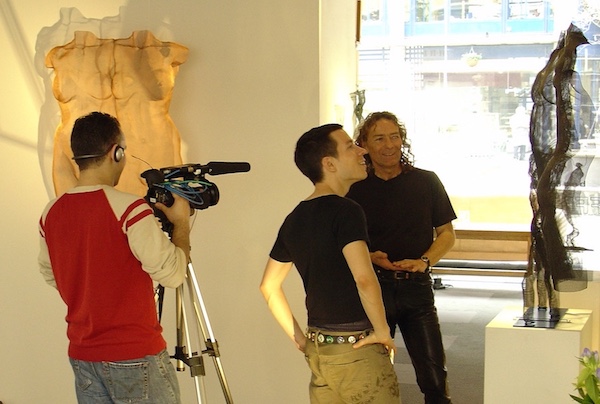
In the past you have been compared to Rodin and Michelangelo, how do you feel about these comparisons now?
Obviously there are similar concerns, particularly as Rodin was the first and most successful artist to consciously use a fragmented form as his subject, he also went on to deal with emotional, physical, passionate and violent expression.
Using wax as his medium, Medardo Rosso has been an intriguing influence. The majority of his mature works appear ‘softly eroded’ or transformed as if by the elements and evocative of the mysterious workings of the imagination - half formed personalities from the deep subconscious. I look to Michelangelo who was the exponent of exaggerated physical form (mannerism).This is because I often have to exaggerate physical features due to the inherent properties and the nature of working with the steelmesh. My concerns are precisely contemporary in that I am transposing a modern industrial material, in a mannerist way, but by no means, the same fashion as Michelangelo, because my influences are from a much wider context in today’s society. My sculpture is completely different because of the nature of the material although the results do strike the same chords.
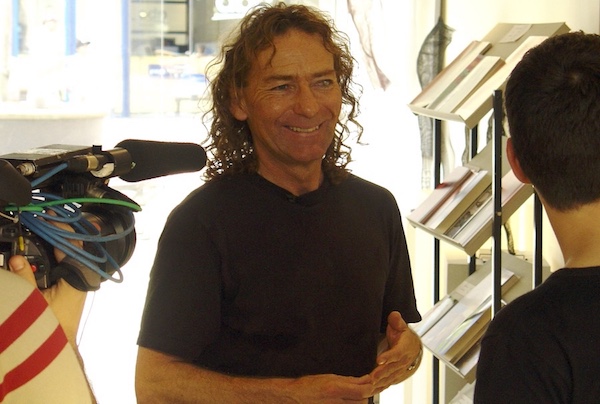
Is this the reason for your success?
My work is successful because it is a fascinating mix of classical qualities with a contemporary material. It is sculptural economy and succinctness with an ebullience of content and subtlety. It is also a marriage of figurative and minimal art.
My sculptures have no palpable substance or surface. At first glance they appear to be a metallic membrane but when you take a closer look they are not even a skin. They are in fact a delineation of surface and form, modelled and drawn in three-dimensional space.
David Begbie
All Web Pages:
© 2026 David Begbie Tel +44 (0)20 7232 1023
We are using cookies for anonymised statistics to offer a better online experience.
Read our Privacy Policy
E-Mail Contact

